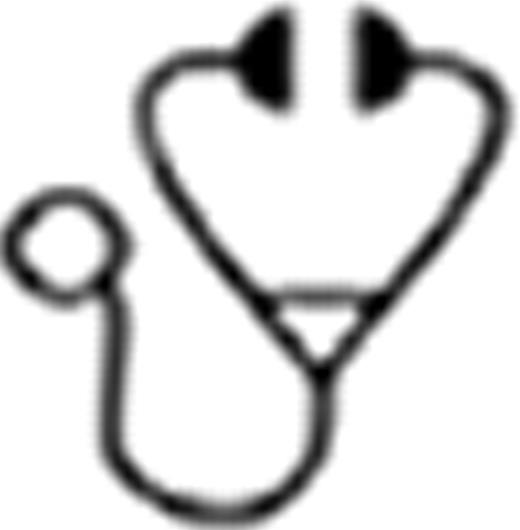Abstract
In year 2008 version of WHO classification for myeloid malignancies, a category of AML with myelodysplasia-related changes (AML-MRC) was defined which included both de novo AML with dysplasia and AML secondary to MDS. It is characterized by poor chemosensitivity for which allogeneic transplantation (allo-SCT) has been a viable option to cure. Umbilical cord blood transplantation (UCBT) is a possible treatment strategy that can be performed for those who lack suitable donors due to rapid availability and less stringent HLA matching required. So far, there have been sparse reports available on UCBT for those with AML-MRC. This study was conducted to see the current update in our institute and to see whether the presence of induction chemotherapy before transplant is better for the outcome.
We retrospectively reviewed patients diagnosed as AML-MRC who underwent UCBT at our institute from Mar. 2002 to Mar. 2011 consecutively. Patients who lacked appropriate adult PB/BM donors underwent UCBT. Patients who had prior history of transplantation, were in poor performance status (ECOG PS >3), had active bacterial or fungal infections at the time of conditioning were excluded.
Eighty-one patients were included. 52 (64%) were males, and median age was 61 years (range, 17–72). 35 (43%) were de novo AML, and 46 (57%) were AML secondary to MDS. Median time from diagnosis to transplantation was 346 days (range, 42–7997). 39 (48%) did not receive induction chemotherapy before transplant. 76 (94%) were not in remission, 29 (36%) were in high, and 52 (64%) were in very high WPSS risk group, just before transplant. 54 (67%) received reduced-intensity conditionings. 65 received GVHD prophylaxis of tacrolimus-based, while 16 did cyclosporine alone. Median observation time for survivors was 646 days (range 32–2456). Median days of neutrophil recovery (> 500/ul) was 20 days (range, 11–45), and cumulative incidence of engraftment was 76.5 % up to day 50 post-transplant. Cumulative incidences of relapse and non-relapse mortality at 2 years post-transplant were 37.8 % and 33.3 %, respectively. Higher incidence of relapse was observed in those with prior history of MDS in univariate analysis (51.8 % vs. 21.2 % at 2 years post-transplant, P = 0.004), which was the only significant factor associated with higher relapse rate in multivariate analysis (P = 0.020). More NRM was observed in those received transplant early period from 2002 to 2005 vs. those who did from 2006 to 2010 (45.1 % vs. 25.5 % at 2 years post-transplant, P = 0.001), and in those received GVHD prophylaxis using CsA alone vs. others (72.0 % vs. 24.8 % at 2 years post-transplant, P = 0.0002). In multivariate analysis, higher degree of HLA mismatch (2 antigens vs. less than 2) and GVHD prophylaxis using CsA alone were associated with higher incidence of NRM (P = 0.024 and P = 0.00047, respectively). Overall survival (OS) was estimated as 42.1 % at 2 years post-transplant. Better OS was observed in those who received conditioning containing 12.8mg/kg of iv busulfan (60.8% vs. 32.4% at 2 years post-transplant, P = 0.0337), in those received tacrolimus-based GVHD prophylaxis vs CsA alone (47.9 % vs. 17.0 % at 2 years post-transplant, P = 0.0024), and in those received transplant in recent period from 2006 to 2010 vs. those who did from 2002 to 2005 (52.1 % vs. 26.1 % at 2 years post-transplant, P = 0.0248). In multivariate analysis, GVHD prophylaxis using CsA alone and poor WPSS risk category just before transplant were the factors significantly asssociated with poor OS (P < 0.0001 and P = 0.001, respectively). There were no significant differences between presence or absence of prior induction chemotherapy in terms of cumulative incidence of neutrophil recovery (71.4 % vs. 82.1% up to day 50 post-transplant, P = 0.88), relapse (38.0 % vs. 36.1%, P = 0.94), NRM (30.7 % vs. 35.4 %, P = 0.87), and OS (47.7 % vs. 36.2%, P= 0.72) at 2 years post-transplant.
These data indicate that CBT is a feasible and promising treatment approach for those with AML-MRC, including elderly patients. More intensive GVHD prophylaxis was beneficial in reducing NRM and improving OS for the population studied. Presence of prior induction chemotherapy before transplant was not associated with higher rate of engraftment or better OS, suggesting tumor reduction before pre-transplant conditioning may not be necessary for successful outcome in our transplant settings.
No relevant conflicts of interest to declare.

This icon denotes a clinically relevant abstract
Author notes
Asterisk with author names denotes non-ASH members.

